Discovered in Spain a molecule against sudden Stroke
Wednesday, July 30, 2014
Researchers at the University of the Basque Country (UPV / EHU) and the CIC biomaGUNE ( a non-profit research organization created to promote scientific research and technological innovation at the highest levels in the Basque Country) have discovered the importance of a molecule in episodes of cerebral ischemia or stroke that could lead to development of new therapies to alleviate brain damage and neurological disorders, caused by this stroke.
The cerebral ischemia is the third leading cause of death and the leading cause of disability in the industrialized countries. It occurs as a result of the temporary or permanent reduction in cerebral blood flow and it causes an irreversible neuronal damage, that causes neurological disorders, as reported by the UPV, in a statement.

Images of consequences on brain ischemic strokes
An important part of this decline is due to altered levels of glutamate, the most abundant excitatory neurotransmitter of the brain, that in turn acts as a potent neurotoxin, when its concentration rises, as occurs during ischemia.
The new discovery shows that the molecule cTX, the cystine-glutamic exchanger, is accumulated to lethal levels for neurons, during ischemia.
So it has been proved by the researchers, in experimental models, that reproduce the main features of sudden stroke, in patients.
In turn, the researchers at CIC biomaGUNE, by functional brain imaging techniques such as PET (from English, Positron emission tomography) have observed that xCT levels are elevated, in rats subjected to ischemia, underscoring its importance in stroke process.
In conclusion, it derives this research, developed in experimental animals, opens the door to development of new neuroprotective treatments, by drugs conducted against the xCT exchanger, in order to cerebral ischemia.
The results of this study have been published, in open, by the Journal of Clinical Investigation.
From the part of Biscay, the research has been led by the researchers María Domercq and Carlos Matute, from the centre Achucarro and UPV / EHU, and, from Gipuzkoa part, by Abraham Martin, a researcher at CIC biomaGUNE of Donostia - San Sebastián.
Well, I hope that you have liked this news. Hopefully this research gets make disappear this hard disease.
Till next time, kind regards,
Luis.
Sponsored by Costaluz Lawyers.
Please click down below:

 0
Like
Published at 11:13 AM Comments (0)
0
Like
Published at 11:13 AM Comments (0)
Site of Orce in Granada, South eastern Spain
Tuesday, July 29, 2014
The basin of Guadix-Baza, a semi-desert region in the north of the province of Granada, harbored as diverse evidence point, a lake with a sheet of water that was standing partially fed by hot springs around 36 º (degrees) C.
Ie the Hoya of Baza, a depression in Granada, that is in the fields of the village of Orce, it was a kind of natural spa, during the Pleistocene.
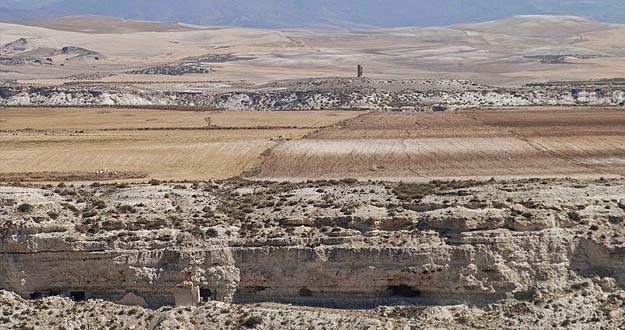
This follows from a work, led by the University of Málaga, beside the Catalan Institute of Human Paleontology and Social Evolution (IPHES) –3 of the Authors are: Jose Manuel García, Bienvenido Martínez-Navarro and Paul Palmvist--, in the journal Quaternary Science Reviews, collecting evidence geochemical, mineralogical and stratigraphic about the presence of hot springs, as reported by IPHES in a note.
Hydrotherapy is linked to the evolution of the basin fill, which was produced by the erosion of the surrounding mountains. This development was conditioned, according to IPHES, by the existence of a high seismicity, manifested by the presence of abundant active faults.
The finding of these abnormalities linked to hydrothermal phenomena can explain the existence of a lake, that held a sheet of permanent water, throughout year, at the time that the deposit “Venta Micena” was formed, about 1.5 million years ago.
The key lies in the isotopic values, recovered in the fossil collagen of wildlife in Venta Micena, cause of they indicate that, a million and a half years, rainfall in the basin of Baza, around 800 milliliters, were well above the current.
This increased water intake, added to the hot springs, whose temperatures upwelling are around 36 ° C, would result in the hydrological stability of the lake, necessary for the existence, in their environment, of the fauna, marking a subtropical character.
This scene sets up what is known as a hotspot (punto caliente) of high biological productivity, similar to that found in the chain of lakes in East Africa, the cradle of humanity.
Today, the vestiges of this thermal activity stay, in spas of Alicún de las Torres or Zújar, or less warm water springs of Fuencaliente, in Orce and Huesca, between others.
So, the rain that falls today represent the region just 350 millimeters per year, so that would be clearly insufficient to recharge the aquifer, when it was an endorheic basin. This means that the lake would have drained seasonally, as it happens today in the Laguna de Fuente de Piedra, current smaller scale analog of the Lake of Baza.
In addition, the low winter temperatures would have assumed that their surface water were frozen, which would preclude the existence of certain elements of fauna, as the giant Pleistocene hippopotamus, a well documented specie, in paleontological sets of the region.
"Now yhen, this megaherbívoro, whose body mass was double than the current specie, had a greater dependence on liquid medium, because it was only feeded with aquatic vegetation", the investigator of the IPHES, Bienvenido Martínez-Navarro, has told.
At several sites in the basin, located in the vicinity of the village of Orce, like Barranco León, Fuente Nueva-3 and Venta Micena, systematic excavations currently are taking place, they sponsored by the Regional Ministry of Culture of the Junta de Andalucía.
They have recovered the oldest fossil evidence of human presence, in Western Europe, dated at 1.4 million years, accurately documenting the ecological and paleoenvironmental setting of large mammal communities, in which these remote villagers were inserted, developed in the brackish environment large lake.
Well, I hope that you have liked this news and you can come to Spain, in order to visit that such interesting place.
Till soon, kind regards,
Luis.
Sponsored by Costaluz Lawyers.
Please click here below:

 0
Like
Published at 12:18 PM Comments (0)
0
Like
Published at 12:18 PM Comments (0)
How to locate lost children on Spanish beaches
Monday, July 28, 2014
Today, I have just seen a very important news: How we can locate children who are lost on beaches.
If you want to have more information, please watch this video, doing click here below:
http://www.rtve.es/alacarta/videos/telediario/aplicacion-ayudara-encontrar-ninos-cada-verano-se-pierden-playas-espanolas/2674512/
Voice in of: “Upon reaching the beach, Sebastian's father puts a bracelet with a "QR" code; it is purchased online, costs around 15 Euros and it is waterproof. If it gets lost, anyone, with a smart phone, can scan the code, see the data of the child and call its parents”
Jon Jairo (Sebastian´s father): “The truth is ... ugh ..., with so many people ... you have to be very aware ...; but it is scary "
Voice in of: “The bracelet is one of the aids, that new technologies offer to a problematic, in Spanish beaches, which is estimated to affect 10,000 families, every summer and, although most of the times, everything stay in a fright, there are some tips, that parents can score”
Francisco Canales (Author of “The problematic of the lost child in summer”): “Also the child, who enters with a float, often is displaced, naturally, by the current. Then, when the child tries to leave, on vertical line, he is in a different place, disoriented; therefore, very important: that parents look in the direction of the current”
Voice in of: “The beaches have also the called "Protocol to the lost child": The tannoy is used and, if in an hour, it fail to locate the child, it is called 112”.
Well, I hope that you have liked this post, such as I did.
Till soon, kind regards,
Luis.
Sponsored by Costaluz Lawyers.
Please click here below:

 0
Like
Published at 12:12 PM Comments (0)
0
Like
Published at 12:12 PM Comments (0)
The first scientist submarine created in Spain
Friday, July 25, 2014
Today, I want to show you a video about the First Spanish scientist submarine. I could watch the video through the program of tv “LAB 24”, on the channel 24 Hours, in TVE. If you want to watch this video, please click here below:
http://www.rtve.es/alacarta/videos/lab24/lab24-pgm8-report/2624416/
Pere Buhigas (The Director of LAB 24): “Ictineu3 is the first scientist submarine, designed and built in Spain. After 10 years of work, it has already completed the first successful dives and it is a step forward, for our country, in Naval Engineering and Technology”
Voice in of: “This is the story of a life project: that of a man who, as a child, dreamed of submarines. He Imagined them, he designed them, he built them ... descended, with his ship, to the depths of the Ocean; wrecks discovered, explored the secrets that hide the pits where there is no sunlight, fauna, flora, remnants of forgotten shipwrecks ........”
Pere Forés (Designer of the Ictineu3): “I remember when I built my first submarine, at age 11; Then, at 14; but I have friends (boys) or friends (girls) who have told me: "No, no, at 7 years you were talking that when you were old, you should make submarines". Well, this of submarines is very special and very passionate ... The Ictineu3 is a submarine in great depth: 1200 meters --is the ninth in the world, for more depth-- and one of the main features is that it is very light, to the depth at which it is: a submarine under 5 tons and a half …, this makes it much easier to move, operate; as it is smaller and lighter, in the water you can bring more to the objects, that you want to study ... It is a 3 seater submarine with a dome, acrylic, large --it is the dome to be lowered more depth in the world-- and this allows the observation is very good: you can see here what happens next, unlike submarines, which only have an ox eye or 4 small ox eyes......”
Voice in of: “These are virtual images of some of the work for which was conceived Ictineu3: as Underwater Observation Platform, and as well as the working arm and orders from the crew. But after 10 years of ingenuity, construction and assembly, the ship is now a reality .............. Finished, to the smallest detail, the submarine lies on the mainland: the warehouse where they have devised and engaged all parts. Technology tip, development and innovation, also in the energy section”
Miguel Angel Rodriguez (Responsible energy ICTINEU3): “The Ictineu3 has 2 power systems: one, the main one, which are lithium-polymer batteries, which are located outside of the submarine, and these, in turn, feed the internal energy system, that functions simply as boot device and as emergency device --if the external batteries should fail, we could take enegy from the internal batteries, which are 24-volt batteries to power the interior systems and power pack would be powered by the outer batteries—. The energy of Ictineu3 system is designed to allow a standard mission, profile of a minimum of 8 hours; it can vary a lot, depending on the type of mission, but ..... chances are that it allows us to even lengthen”.
……………….music…………………….
Voice in of: “In April 2014, the Ictineu3, exceeded, successfully, its baptism under water, in port. After pressure testing, they were validated, in dry, the systems that make up the submarine, as Hidáulica, the MFD, the electrical system, the Power system or the Propulsion. Security verified, Team assumes finished the project and the heir of the first Ictineu, by Monturiol, is fully operational, to campaign anywhere in the world”
….music….
Carme Parareda (Operations Director ICTINEU3): “But.. scientific campaigns, to study Marine Biology, Marine Geology, Oceanography .... for sampling of marine organisms ... any type of research related to Marine Biodiversity. Also for Underwater Archaeology ... --the Mediterranean is a sea, which has thousands of years of history and thousands of years of submerged history with ... hundreds of thousands of shipwrecks and where much is still unknown and is ICTINEU3 a good equipment to work with Archaelogists and make new discoveries and study the sites, wrecks that are already known--. Another application is the Medical and Pharmacological field; it has been explored, very much, the surface of the Earth, the Rainforest; but in the seabed, we only know just the 5%, the rest is full of living things, plants, organisms that contain active ingredients that can be very useful for the cure of diseases, which still have no cure, --in the last two years, there have been important advances, from active ingredients of marine organisms. Other applications, more industrial, are in the field of infrastructure maintenance, detection of faults in submarine cables, submarine pipelines, marine infrastructure of all kinds, no wind platforms ..... "
Voice in of: “A promising future, not only for the company but also for the country, as a world power in the construction of civil ships, capable of great depths down ........The dream of Pere Forés has just begun”.
Well, I hope this project has been interesting for you. I think that it is very interesting.
Till soon, kind regards,
Luis.
Sponsored by Costaluz Lawyers.
Please click here below:

 0
Like
Published at 11:52 PM Comments (0)
0
Like
Published at 11:52 PM Comments (0)
The Spanish book "Mighty like a child"
Thursday, July 24, 2014
Today I want to talk to you about the need to disconnect from work, on vacation. And for that, I have resorted to the interview that they did, in the radio, to the Spanish Psychologist, Jose Miguel Sanchez, who has published a book entitled: "Poderoso como un niño" ("Mighty like a child").
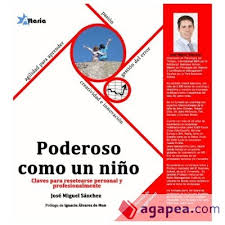
Jose Miguel has extensive experience as a Senior Executive Coach of companies and he says that, in most cases, despite the appearance of power, when he treated them, personally, they demonstrated to have many vulnerabilities, many limitations , which were not well worked. However, Jose Miguel sees that kids are powerful.
In his book, he uses the word “To reset”; he means that you can reset your wrong behaviors –like a computer is reset and all is right— and then you can start again. Because Jose Miguel says that we have learned a lot of things and we have to inspect them. In fact, Jose Miguel works twelve areas, in his book, like: commitment, passion, ability interrelation, learning agility, creativity, etc.
All these things have had when we were kids (they are neural circuits, that have been created and have been in use, however, as adults, for whatever reason --often social—we have decided to abandon them) . So, to me, "Reset" is to reconnect these neural circuits, which, at the time, they were and cause of a reason, surely social, we have decided to disconnect them.
In his book, Jose Miguel makes a difference among Commitment and Passion. He says that Commitment is something voluntary and requires motivation. However, the Passion goes a step further. According to the Royal Academy of the Spanish Language, the Passion is "A vehement hobby for something". That "vehement hobby" is what we see in children, in almost everything they do. That "vehement hobby" is what we see in adults, when they really go for something. However, Commitment is a previous step, it is voluntary.
Jose Miguel also speaks of Communication. He says that children Communication is direct, unfiltered, unqualified; we know what we are asking, since they are very small. However, adults use a communication with filters --what psychologists call "mental models"-- and these filters start to get complicated.; and we have not learned, for example in the business, to talk, to have a honest conversation. Jose Miguel says that we base our communication in words, when what matters is not the words, but our corporality and our tone of voice --and this could link to the Passion-- . He says that an unconscious communication exists. For example, many times ocurrs that you see to somebody, for a first time, and you are liked to that person; it is, because exists an unconscious communication among both of you.
Jose Miguel also speaks, in his book, of Confidence and does this in two ways: that I have Confidence in myself and trust that I believe in my team. The confidence in myself stems from the belief that I have in me and also I will help my environment.
On the other hand, the Confidence in my team is a word that is divided into 2: “Con” ("With") and “fianza” ("bail"); ie I give "Bail" to my team.
“Learning agility” is one of the skills that best are working right now to measure the talent and potential in people. Just do not care what you know, what you know, but also what you are capable of learning. To Jose Miguel, the "Learning Agility" is a mixture of several things: flexibility, the ability to adapt, the ability to manage change --we have to get used to living in the changes--. Jose Miguel says that the Agility to learn has to do with these people who are "Early adopter", ie those people who take a fashion, as this goes to the market. In Marketing, this concept is used; for example, at first hardly anyone wanted to have "Apple", however many millions of people now use an AIPAD of Apple.
Well, I hope that you have liked this post such as I did.
Till soon, kind regards,
Luis.
Sponsored by Costaluz Lawyers.
Please click here below:

 0
Like
Published at 4:19 PM Comments (0)
0
Like
Published at 4:19 PM Comments (0)
Music enhances the mood of patients with advanced disease in Spain
Wednesday, July 23, 2014
The last month, I could watch on tv a news about old people, that I liked, and I want to share it with you. If you want to know this news, please click here below:
http://www.rtve.es/alacarta/videos/telediario/musica-ayuda-distraerse-pacientes-enfermedades-avanzadas/2625850/
Bernabé Sánchez-Minguet (Voice in of): “These are patients with advanced disease, from the Care Centre "Laguna" in Madrid; like them, there are 125,000 in Spain. Music, they say, helps them get distracted and forget, for a moment, their health problems”
A lady from the Centre: “It gives you a well-being, a joy ... I do not know”
A lord: “It encourages one slightly…”
Another lady: “It gives you joy ...you get life”
Bernabé: “Volunteer musicians are part of the therapy. In this centre --one of the two hospitals, specialized in Palliative Care in Spain—they have more than 50; they devote their time to those who no longer have”
Eduardo Hernandez (Volunteer): “What differentiates to play in front of this people than to play in front .... in a room or at a concert? ...... but this fills you much more”
Bernabé: “To sing, clap or just listening music has shown benefits, in addition to a study by this Centre”
Borja Múgica (Psychologist of Social Work of La Caixa in the Hospital Laguna): “It was found that over 60% of patients improved mood ...., improved mood, improved fatigue and improved the perception of pain”
Bernabé: “Initiatives like this one, argue the phrase by Berliov: "Music and love are the two wings of the soul"
Well, I hope that you have liked this project, such as I do.
Till soon, kind regards,
Luis.
Sponsored by Costaluz Lawyers.
Please click here below:

 0
Like
Published at 12:26 PM Comments (0)
0
Like
Published at 12:26 PM Comments (0)
Spanish research on how alcohol causes brain damage
Tuesday, July 22, 2014
Today I want to share with you a video about a research in Spain about alcohol.
I have a video to show you; if you want to watch it, please click here below:
http://www.rtve.es/alacarta/videos/telediario/consumo-abusivo-alcohol-provoca-danos-cerebro/2626080/
Teresa Aguiló (Voice in off): “Less than 80 degrees, large deep freezers preserved brain samples collected over decades. Such extreme temperatures are necessary to keep intact proteins possessing neurons”
Koldo Callado: “Pieces of brains of patients who died 40 years ago .........,; if we stimulate these proteins, they are able to react to that stimulus .. even 30 or 40 years after someonewho has died”
Teresa Aguiló: “So they were compared post mortem brains mature, diagnosed with alcoholism at least a decade, with other not consumers of Ethanol. The graphs show clear changes in proteins in the brains of drinkers”
Koldo Callado (Professor Pharmacology of University Pais Vasco): “We have seen that the majority of cases, in the brains of alcoholic patients had less amount of protein than in controls; but in some cases, for example in Alzheimer's disease, an overexpressed is produced in some types of protein”
Teresa: “hese changes in proteins in alcoholics affect various functions”
Koldo: “Loss of impulse control, problems to develop high cognitive functions, fix the attention…….”
Teresa: “Refine, at the molecular level, the damage of alcohol on the brain opens the door to new drugs and therapies to prevent and mitigate its deterioration”
Well, I hope that you have liked this post.
Till next time, kind regards,
Luis.
Sponsored by Costaluz lawyers.
Please click here below:

 0
Like
Published at 12:18 PM Comments (0)
0
Like
Published at 12:18 PM Comments (0)
39 marine areas for the protection of birds in Spain
Sunday, July 20, 2014
The Ministry of Agriculture, Food and Environment (Magrama) on last Thursday approvedthe declaration of 39 spaces for the protection of birds in marine waters, which are incorporated into the European network Natura 2000 as Special Protection Areas for Birds (SPAs ).
With this ministerial order, published Thursday in the Official Gazette, an area of 50,000 square miles protected, the 8% of the Spanish sea surface, which, according to the Spanish Ornithological Society (SEO / Birdlife), places Spain at the European leader in marine protected area.
The protection of these new 39 spaces, for which the Magrama must approve the respective management plans within two years, is the result of research work carried out in the last ten years on two projects “Life +”, co-financed by the European Unionwhich, allowed to collect the information necessary to establish the natural values of these places.
The ministerial order states new SPAs, in areas around the Spanish coast, as the Estuary of Mundaka, Ogoño-Cape; Islets of portios- Mouro Island; Cape Peñas; the Candelaria-Punta Ortigueira Estuary-Stake Bars; Coast Ferrolterra-Valdoviño; Costa da Morte; Banco de Galicia; Rias Baixas in Galicia; the Gulf of Cadiz; space marine Tinto and Odiel; Cadiz Bay; or the Bay of Málaga-Cerro Gordo.

Estuary of Mundaka, Vizcaya
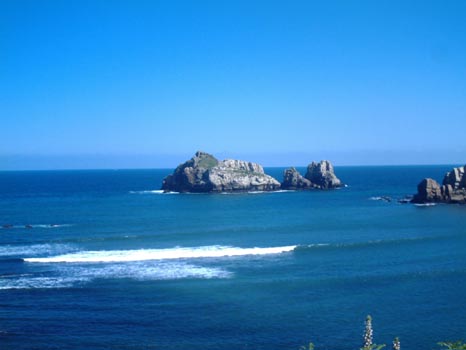
Islets of Portio
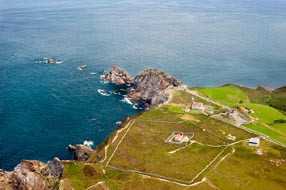
Cape Peñas, Asturias, North western Spain
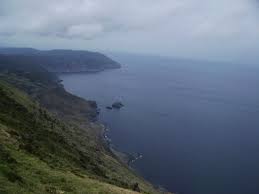
Punta Candelaria - Estuary of Ortigueira - Stake Bars, Galice, North western Spain

Coast Ferrolterra - Valdoviño (La Coruña, Galice)
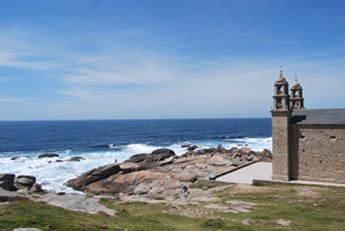
Coast Da Morte (Coast of Death), La Coruña
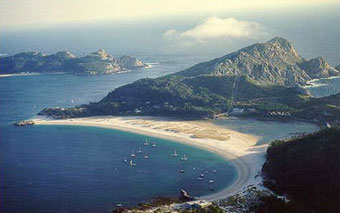
Rias Bajas, South of Galice, North western Spain

Gulf of Cadiz, Costa de la Luz, South western Spain

The Rivers "Tinto and Odiel", Huelva, South western Spain
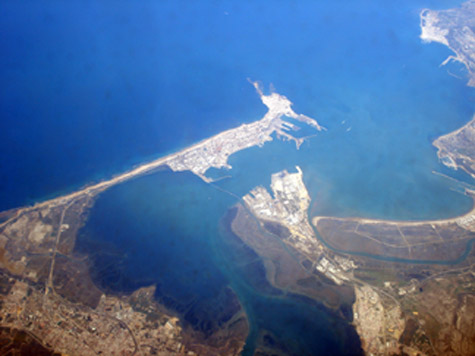
Bay of Cadiz, Costa de la Luz, South western Spain
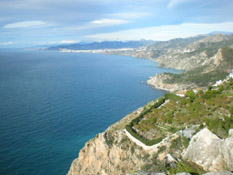
Malaga - Cerro Gordo
They are also a part of the new list: Alboran island; Bay of Almeria; Littoral Islets of Murcia and Almeria; space marine Tabarca-Cabo de Palos; Platform-slope marine Cape Nao; the Delta de l'Ebre-Illes Columbrete; Baix Llobregat-Garraf; and marine spacel'Empordà.
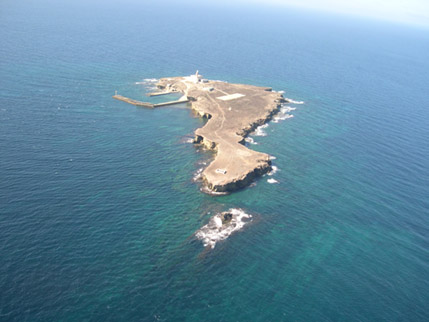
Alboran Island, South western Spain
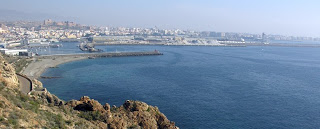
Bay of Almeria, South eastern Spain
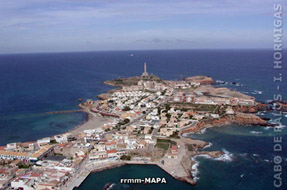
Cape of Palos, Murcia, East of Spain
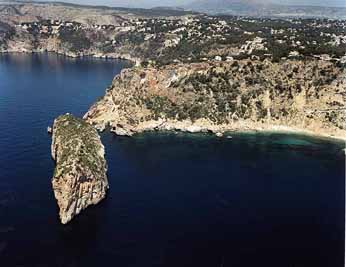
Cape of La Nao, Valencia, Eatern Spain
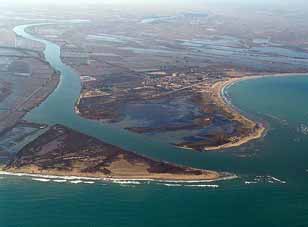
Delta del Ebro, North eastern Spain
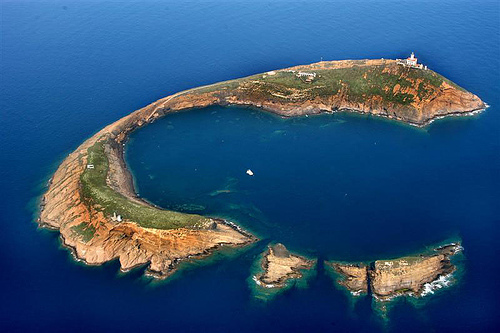
Columbrete Islands, Cataluña, North eastern Spain
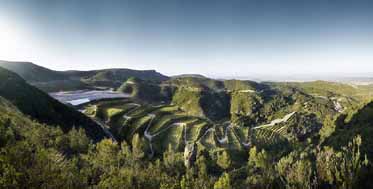
The Natural Park "El Garraf", between the Bajo Llobregat, the Mediterranean Sea and the Penedes Mountains
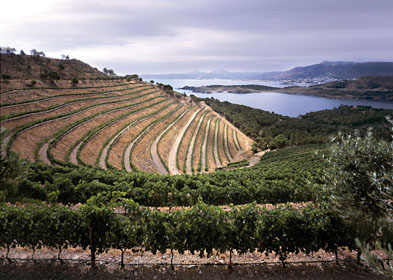
l´Empordá, Gerona, North eastern Spain
The order also includes several marine areas of the archipelagos, such as the marine space of Formentera and southern Ibiza; the west and north of Ibiza; release of Ibiza; southern Mallorca and Cabrera; the west of Mallorca; Northern Mallorca; north and west of Menorca; southeast Menorca; western El Hierro; Roques of Salmor; northern La Palma; and marine space La Gomera-Teno.
Rounding out the list the Cliffs of Santo Domingo and Roque de Garachico; The Mogán- space marine Roque Beach; Anaga marine space; the Mogan-Village; The Labocayna; Islet of Lanzarote; and Bank of the Conception.
All are identified as containing areas of poultry feed in the sea areas adjacent to the main breeding colonies, rest areas at sea or a location near the main marine migratory corridors, according to the BOE areas.
The statement of these 39 protected sites is based on the inventory of Important marine Bird Areas (IBA) in Spain, a compendium of 44 marine sites proposed for protection for their high value for birds and published in 2009 by SEO / Birdlife .
This catalog collected the research conducted by the organization under one “Life+”, launched in 2004, in collaboration with the Ministry of Rural and Marine project.
Then the Life + INDEMARES project (Inventory and designation of the Natura 2000 network in marine areas of the Spanish State), which was extended from 2009 to 2013, has yielded new data have confirmed the importance of all these areas and has established the basis science on which the new SPAs are supported.
The order, which emphasizes that in Spain there is a variety of geographic areas and marine environments, that encourage diversity of seabirds present, indicates that many of these species of birds breed regularly in Spain, and some of them, such as Balearic Shearwater or the Audouin seagull in Spain have their main breeding sites.
The order, which emphasizes that in Spain there is a variety of geographic areas and marine environments that encourage diversity of seabirds present, indicates that many of these species of birds breed regularly in Spain, and some of them, such as Balearic Shearwater or the Audouin seagull in Spain have their main breeding sites.
Furthermore, the document stresses that many other species of birds from northern Europe use Spanish waters during their migrations or during winter, increasing biodiversity.
Spain, which is the European country's land with the largest surface, contributes to the Natura 2000 network, the main instrument for the conservation of biodiversity in the European Union, which includes nearly 30% of the land (15 million hectares), dragging the unfinished to expand marine areas that are included in this Network.
However, this statement is "a milestone in marine conservation", in accordance with the responsible for SEO/Birdlife, Asun Ruiz, who stressed that the methodology to be followed in Spain, until the declaration of new marine SPAs, has become a world leader and is being emulated by other countries that are inventoried sea areas to be protected to safeguard habitats and species.
Ruiz has also be emphasized that this statement should serve to dispel "false myths", about the spaces of the European network “Natura 2000”, and has insisted that, although it is the biggest gamble of Europe for the conservation of biodiversity, "are not conservation sanctuaries”, but places where you can reconcile the conservation and production.
Well, I think that it is a very interesting subject. Do not you think the same than me?.
Till soon, kind regards,
Luis.
Sponsored by Costaluz Lawyers.
Please click here below:

 0
Like
Published at 2:47 AM Comments (0)
0
Like
Published at 2:47 AM Comments (0)
A walk through the centre of Cadiz, Southwestern Spain
Friday, July 18, 2014
Last Tuesday, I was strolling through the centre of Cadiz (Costa de la Luz, Southwest Spain) and I used my camera, to take some pictures, which I want to share with you today.
The first big space that I found was the named “Plaza del Mercado” (Square of the market):


On the walls of the market, you can see several murals of Cadiz:
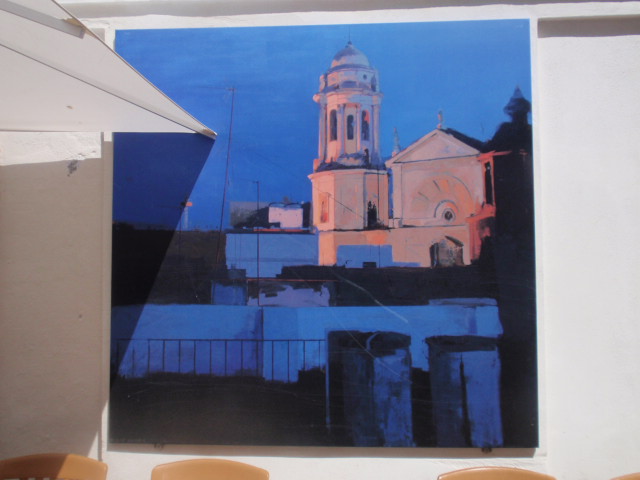
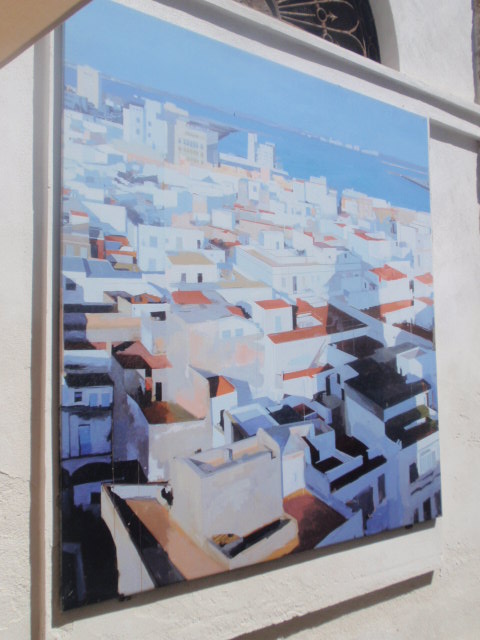
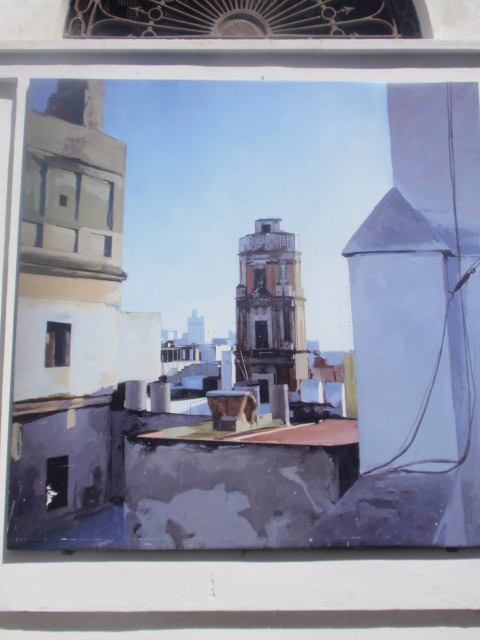
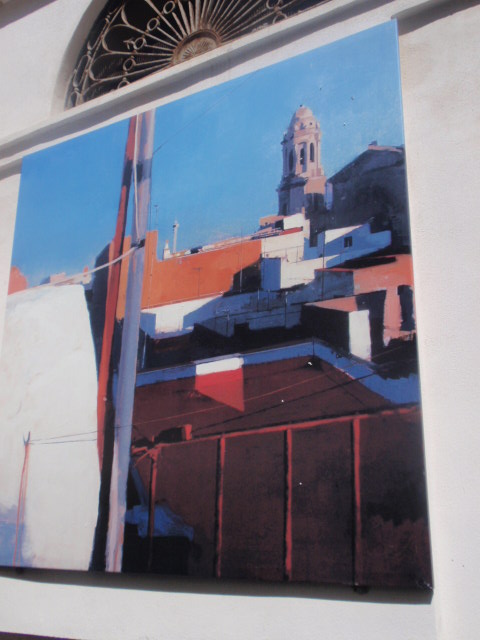
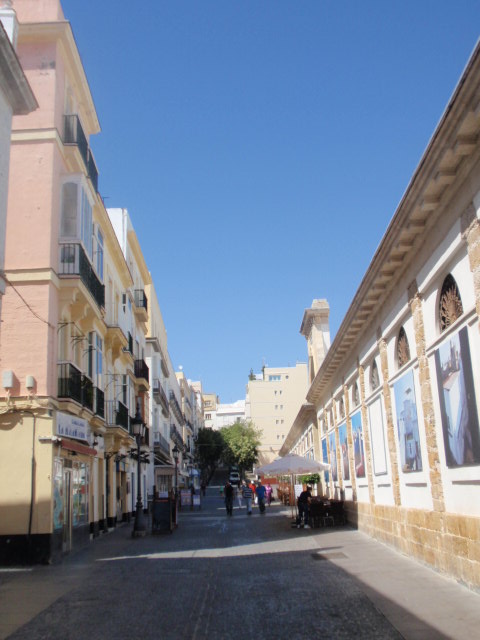
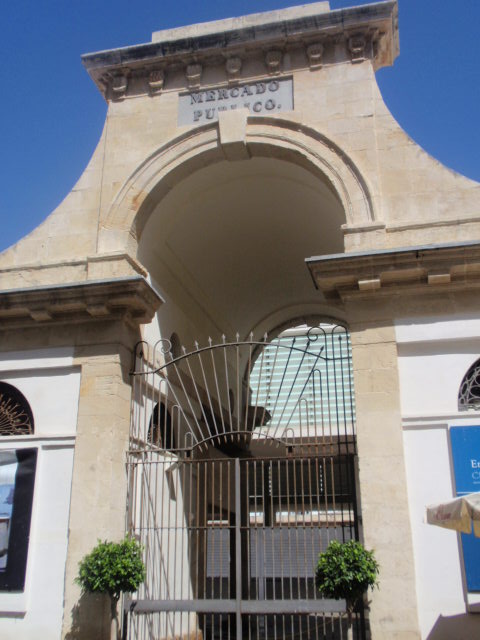
This is the main door of the market
The next space in my walk was the named “Plaza de las flores” (Square of the flowers); but, before I found this building on the way:
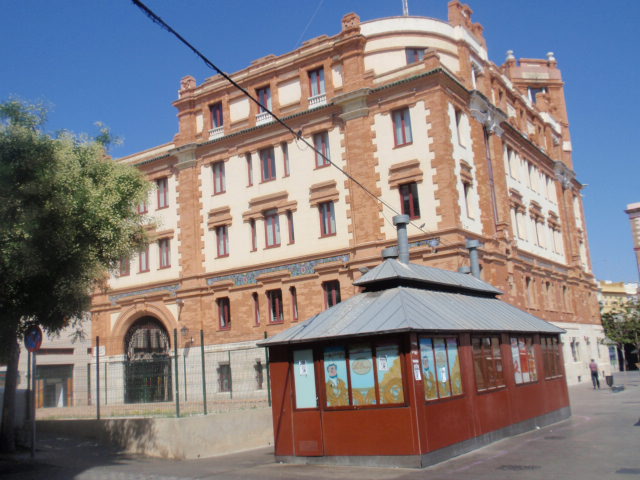
It is the back of the Post office
This is the "Square of the flowers":
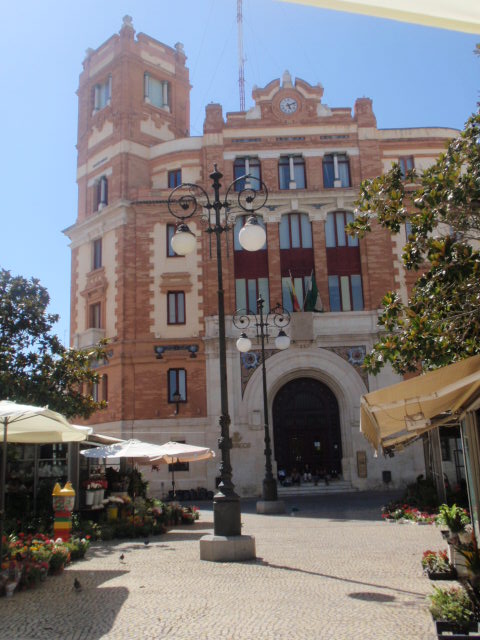
In the square of the flowers you can see the building of the Post office:
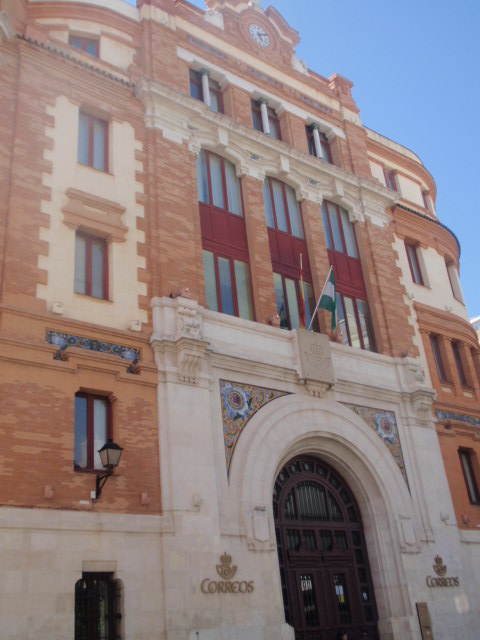
In this square, you can also see a statue of Lucio Moderato Columela (a Roman writer, who was born in Cadiz). No one knows the exact date of his birth, but it is believed that it was around the beginning of the Christian Era:
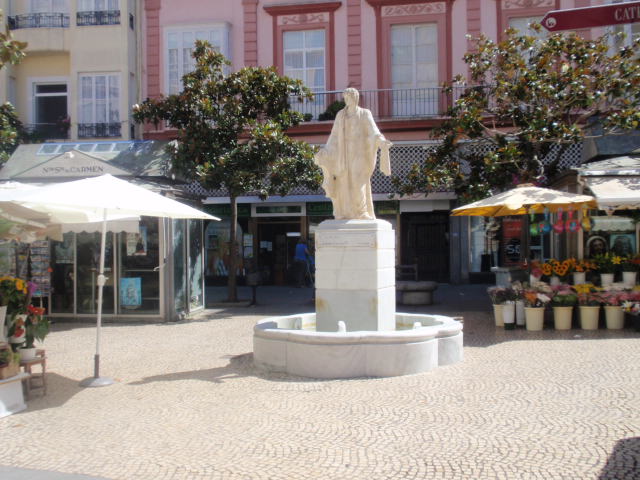
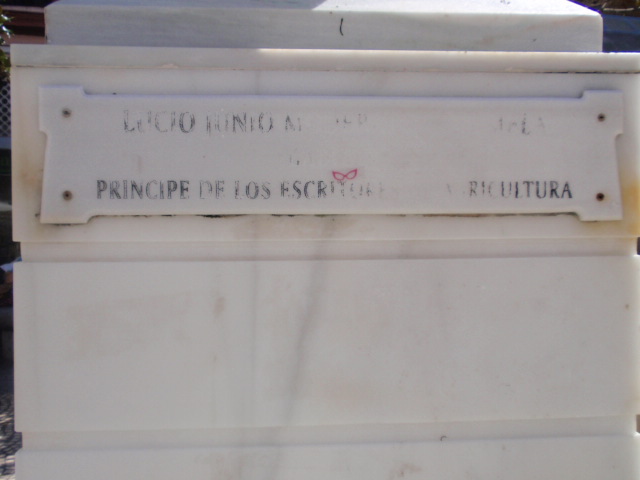
Lucio was named “The Prince of writers of Agriculture”. He was the best agronomic treatise of the Roman Empire.
He was a Seneca´s friend. Lucio went to Rome, in his youth. There, he was devoted to large-scale agriculture.
The next space that I visited was the grate “Plaza de la Catedral” (Square of the Cathedral), through a narrow street:
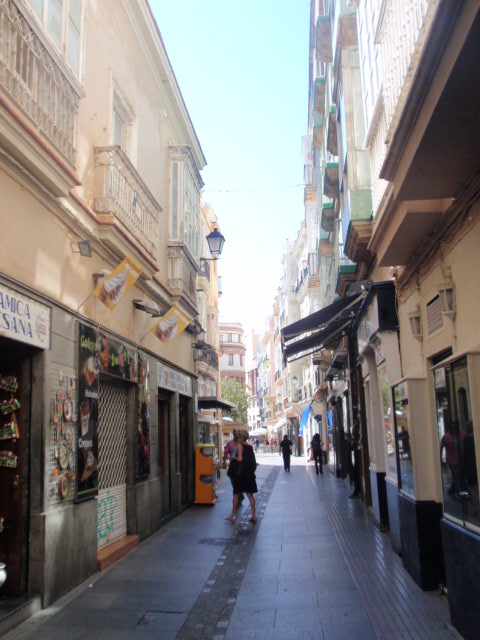
A view to the Square of the flowers
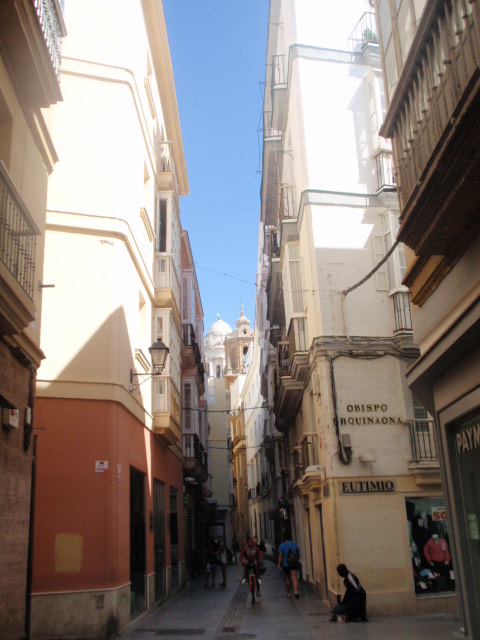
Now you can see a little bit of the Cathedral
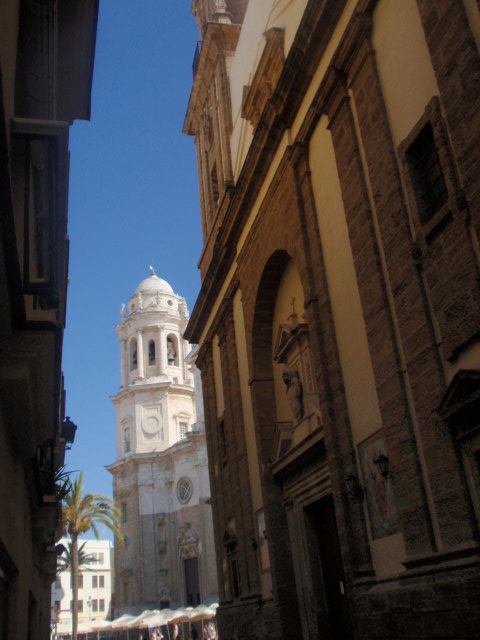
A tower of the Cathedral
This is the Cathedral:
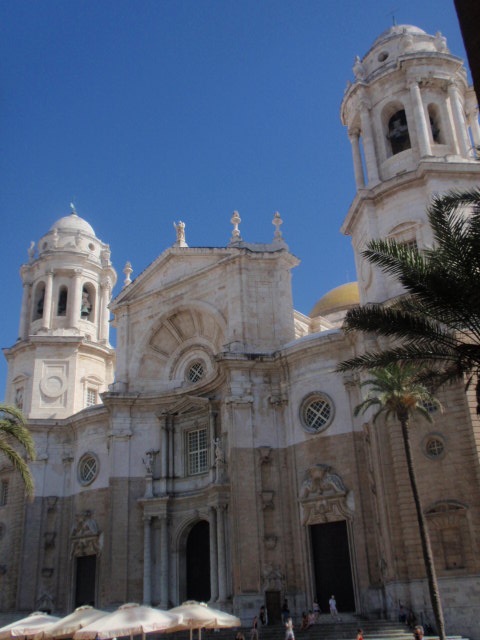
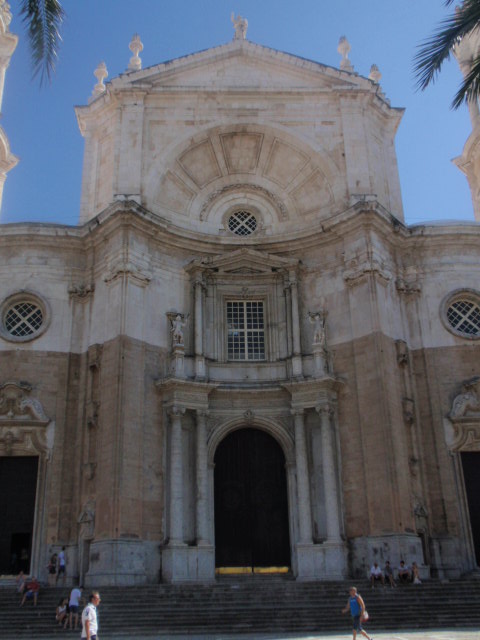
And this is the "Square of the Cathedral":
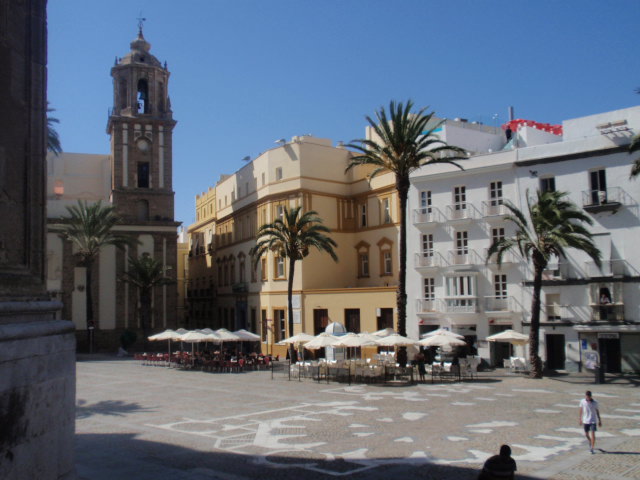
Here, you can see a very important arch, named “The arch of the flowers”. It is very important, because it is the door through you can go inside the oldest neighborhood of Cadiz, named “Pópulo”:
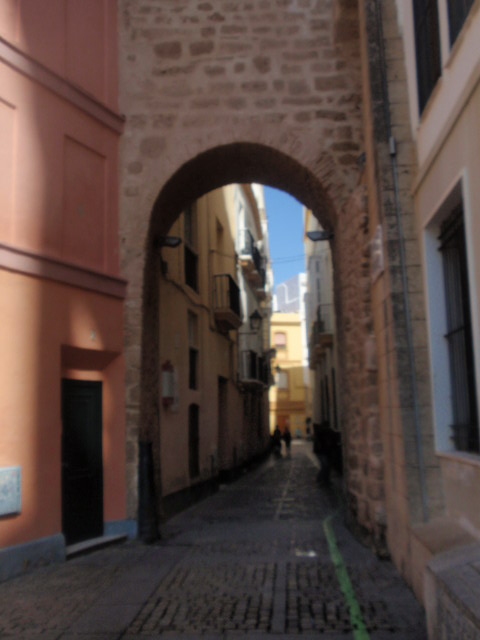
And this is the view of the Cathedral Square through the arch of flowers:
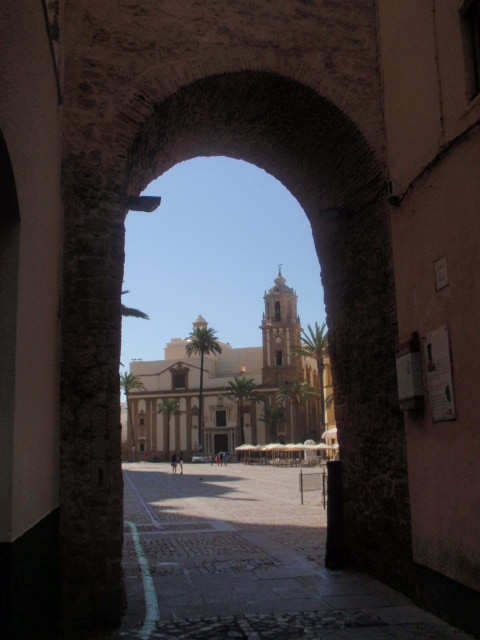
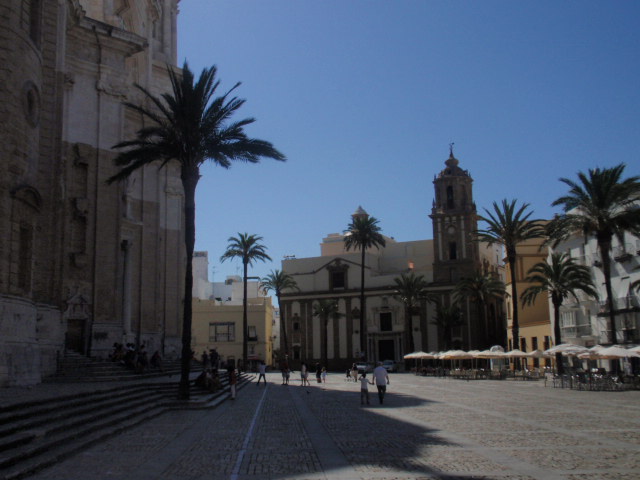
In the background, you can see the church named "Santiago"
I was behind the Cathedral and I could see this one:
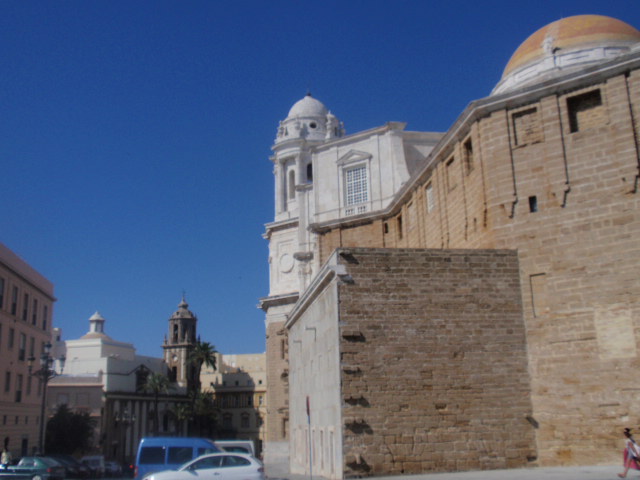

This is the yellow dome of the Cathedral ( a typical image that you can see in many journals, on tv and on Internet:
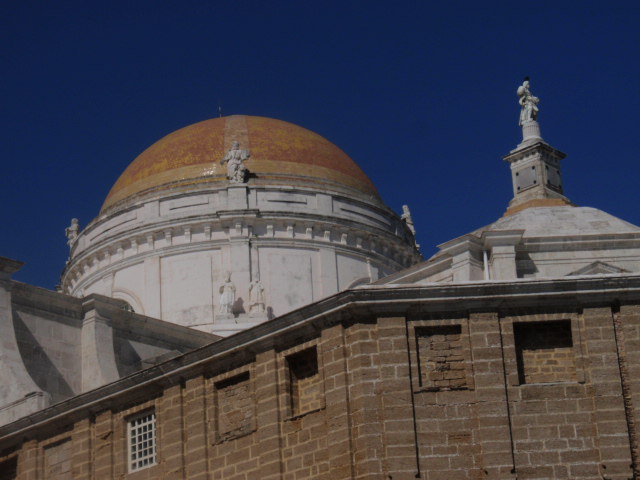
And from that place, I could see two very nice images of Cadiz:
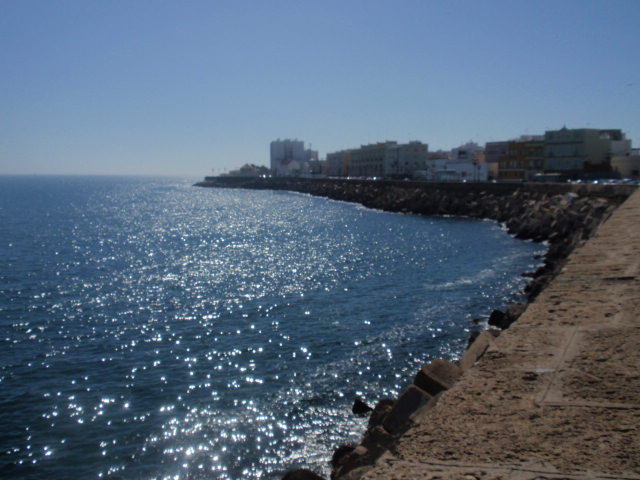
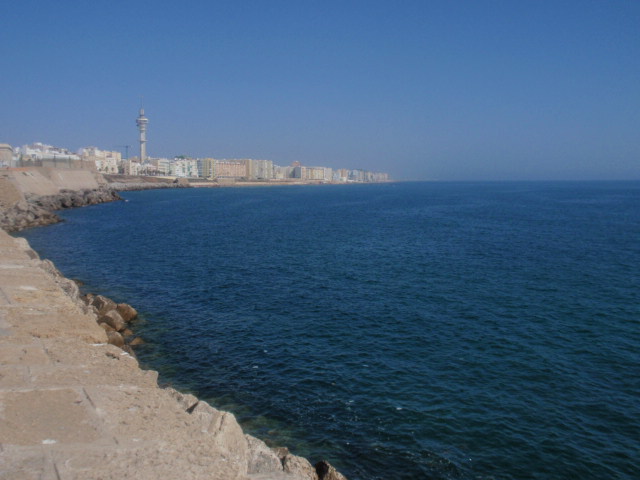
Well, this one was my short but nice walk through the oldest area of Cadiz. I hope that you can make a similar walk than mine.
Till next time, kind regards,
Luis.
Sponsored by Costaluz Lawyers.
Please click here below:

 0
Like
Published at 11:22 AM Comments (1)
0
Like
Published at 11:22 AM Comments (1)
Spam post or Abuse? Please let us know
|
|